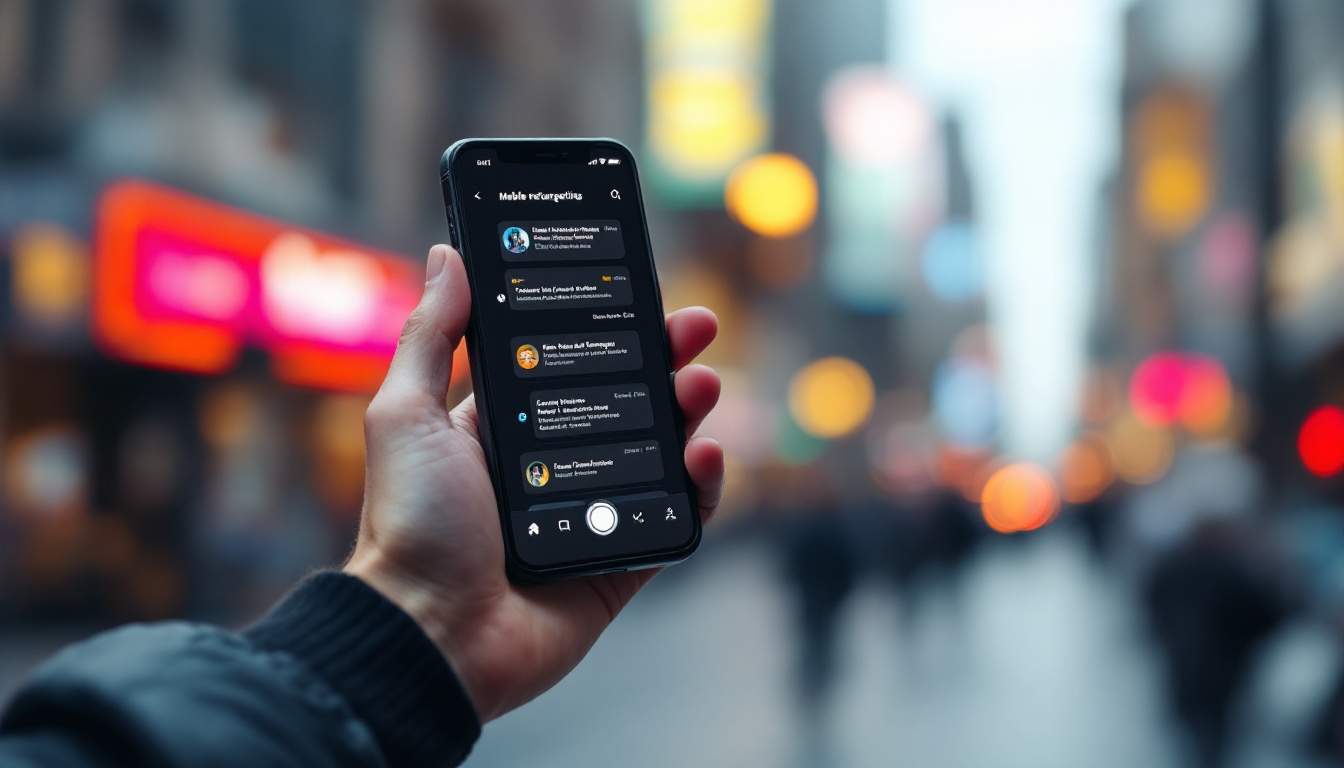What is mobile retargeting?
Mobile retargeting focuses on re-engaging users who have previously interacted with a mobile application or website. It is a powerful tool for marketers to enhance user engagement, increase conversions, and drive customer loyalty. This glossary entry will delve into the intricate details of mobile retargeting, its importance, how it works, and its various strategies.
Understanding mobile retargeting requires a comprehensive grasp of the digital marketing landscape, particularly the role of mobile devices in shaping consumer behavior. As mobile usage continues to surge globally, marketers are leveraging this trend to deliver personalized ads that resonate with users’ interests and preferences. Mobile retargeting plays a pivotal role in this endeavor, serving as a conduit to reconnect with potential customers and steer them towards conversion.
Definition of Mobile Retargeting
Mobile retargeting is a form of online advertising that targets users who have previously visited a mobile app or website but did not make a purchase or perform a desired action. It uses cookies or mobile advertising IDs to track user behavior and deliver personalized ads that aim to re-engage these users and prompt them to complete the desired action.
The essence of mobile retargeting lies in its ability to remind users of their previous interactions with a brand, thereby keeping the brand at the top of their mind. This strategy is particularly effective in the mobile space, where users spend a significant amount of time browsing, shopping, and engaging with content.
Importance of Mobile Retargeting
Mobile retargeting is crucial in today’s digital marketing landscape for several reasons. First, it allows brands to stay connected with their audience, even after they leave their app or website. This continuous engagement helps build brand recall and loyalty, which are key to driving conversions and customer retention.
Second, mobile retargeting helps brands maximize their return on ad spend (ROAS). By focusing on users who have already shown interest in their products or services, brands can ensure that their advertising budget is spent on high-potential leads. This targeted approach often results in higher conversion rates and a better return on investment.
How Mobile Retargeting Works
Mobile retargeting operates on the principle of tracking user behavior and leveraging this data to deliver personalized ads. This process involves several steps, starting with the user visiting a mobile app or website. During this visit, a cookie or mobile advertising ID is placed on the user’s device, which tracks their actions and preferences.

Once the user leaves the app or website without making a purchase or performing a desired action, the cookie or mobile advertising ID triggers the retargeting process. The user is then served personalized ads based on their previous behavior, with the aim of enticing them to return to the app or website and complete the desired action.
Role of Cookies and Mobile Advertising IDs
Cookies and mobile advertising IDs are integral to the functioning of mobile retargeting. Cookies are small files that are stored on a user’s device when they visit a website. They track the user’s behavior, including the pages they visit, the time they spend on each page, and the actions they perform.
Mobile advertising IDs, on the other hand, are unique identifiers associated with a user’s mobile device. They allow advertisers to track a user’s behavior across multiple apps and deliver personalized ads based on this behavior. Both cookies and mobile advertising IDs enable advertisers to create a comprehensive profile of a user’s interests and preferences, which is crucial for effective retargeting.
Strategies for Mobile Retargeting
There are several strategies that marketers can employ for effective mobile retargeting. These include segmentation, personalization, frequency capping, and cross-device retargeting. Each of these strategies has its own set of advantages and can be used in different scenarios depending on the brand’s objectives and target audience.
Segmentation involves dividing the target audience into distinct groups based on their behavior, interests, and preferences. This allows marketers to deliver highly relevant ads to each segment, thereby increasing the likelihood of engagement and conversion.
Personalization and Frequency Capping
Personalization is another key strategy in mobile retargeting. It involves tailoring the ad content to match the user’s interests and preferences, thereby making the ad more appealing and relevant. Personalization can be achieved by leveraging the data collected through cookies and mobile advertising IDs.
Frequency capping is a strategy that involves limiting the number of times a user sees the same ad. This is important to prevent ad fatigue and maintain a positive brand image. Frequency capping ensures that users are not overwhelmed with the same ad, thereby increasing the chances of a positive response.
Cross-Device Retargeting
Cross-device retargeting is a strategy that involves targeting users across multiple devices. This is particularly effective in today’s multi-device world, where users often switch between devices throughout the day. Cross-device retargeting ensures that the brand message remains consistent and reaches the user, regardless of the device they are using.
This strategy requires a deep understanding of the user journey across different devices. It involves tracking the user’s behavior on each device and delivering personalized ads that resonate with their cross-device experience.
Challenges in Mobile Retargeting
While mobile retargeting offers numerous benefits, it also presents several challenges. These include privacy concerns, ad blocking, and the complexity of the mobile ecosystem. Each of these challenges requires careful consideration and strategic planning to overcome.

Privacy concerns are a major challenge in mobile retargeting. Users are becoming increasingly aware of their digital footprint and are often wary of being tracked. This necessitates a transparent approach to data collection and usage, with clear communication to the user about how their data is being used and the benefits they can expect in return.
Ad Blocking and Mobile Ecosystem Complexity
Ad blocking is another challenge in mobile retargeting. Many users install ad blockers to prevent intrusive ads, which can hinder the effectiveness of retargeting campaigns. To overcome this challenge, marketers need to ensure that their ads are relevant, non-intrusive, and provide value to the user.
The complexity of the mobile ecosystem is a further challenge. With a multitude of devices, operating systems, and apps, delivering a consistent and effective retargeting campaign can be a daunting task. This requires a deep understanding of the mobile landscape and the ability to adapt to its ever-changing nature.
Conclusion
Mobile retargeting is a powerful tool in the digital marketer’s arsenal, offering a strategic approach to re-engage users and drive conversions. By understanding its workings, importance, strategies, and challenges, marketers can leverage this tool to its full potential and achieve their marketing objectives.

As the mobile landscape continues to evolve, so too will the strategies and technologies associated with mobile retargeting. Staying abreast of these changes and adapting to them will be key to maintaining a competitive edge in the digital marketing space.